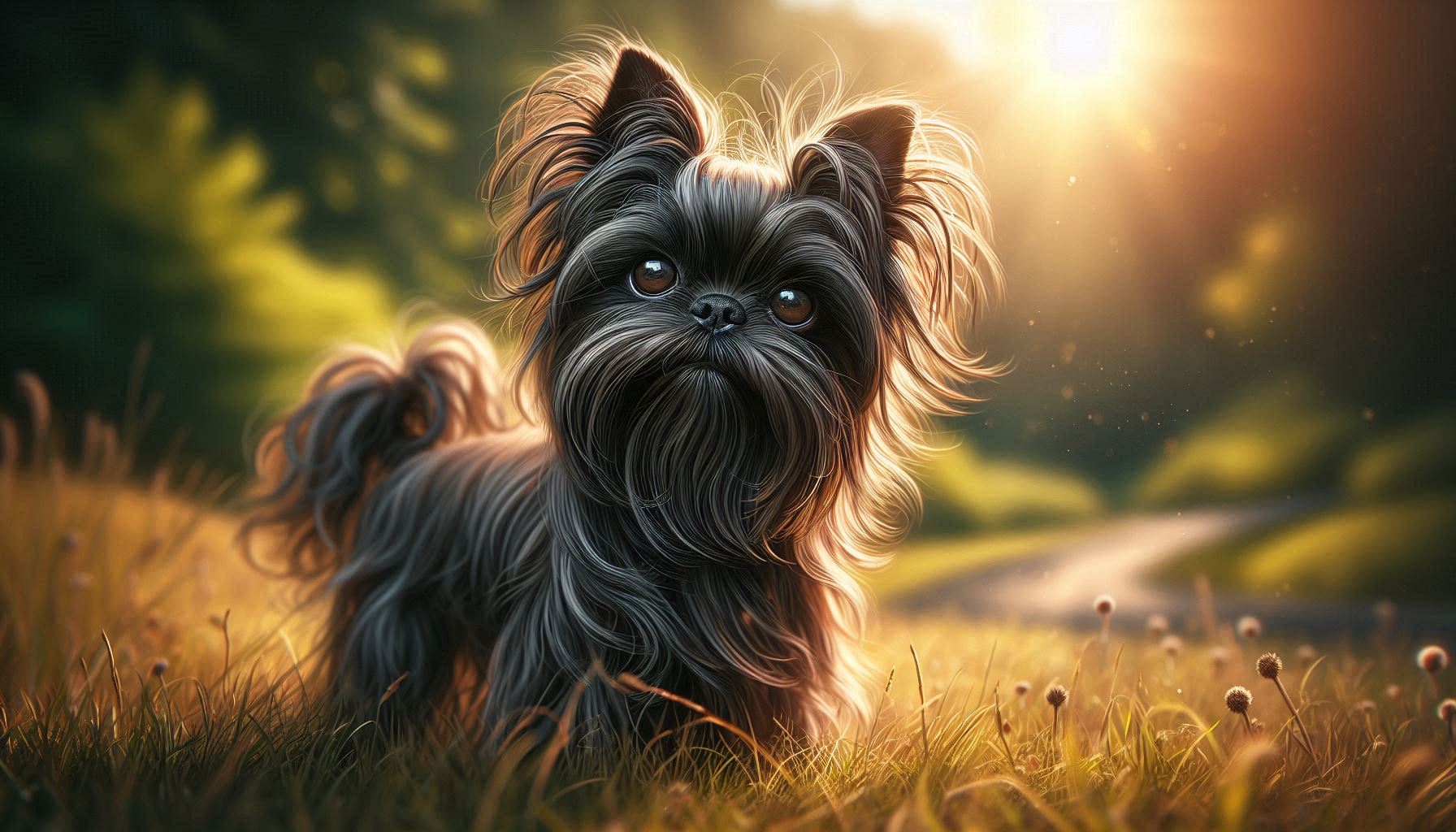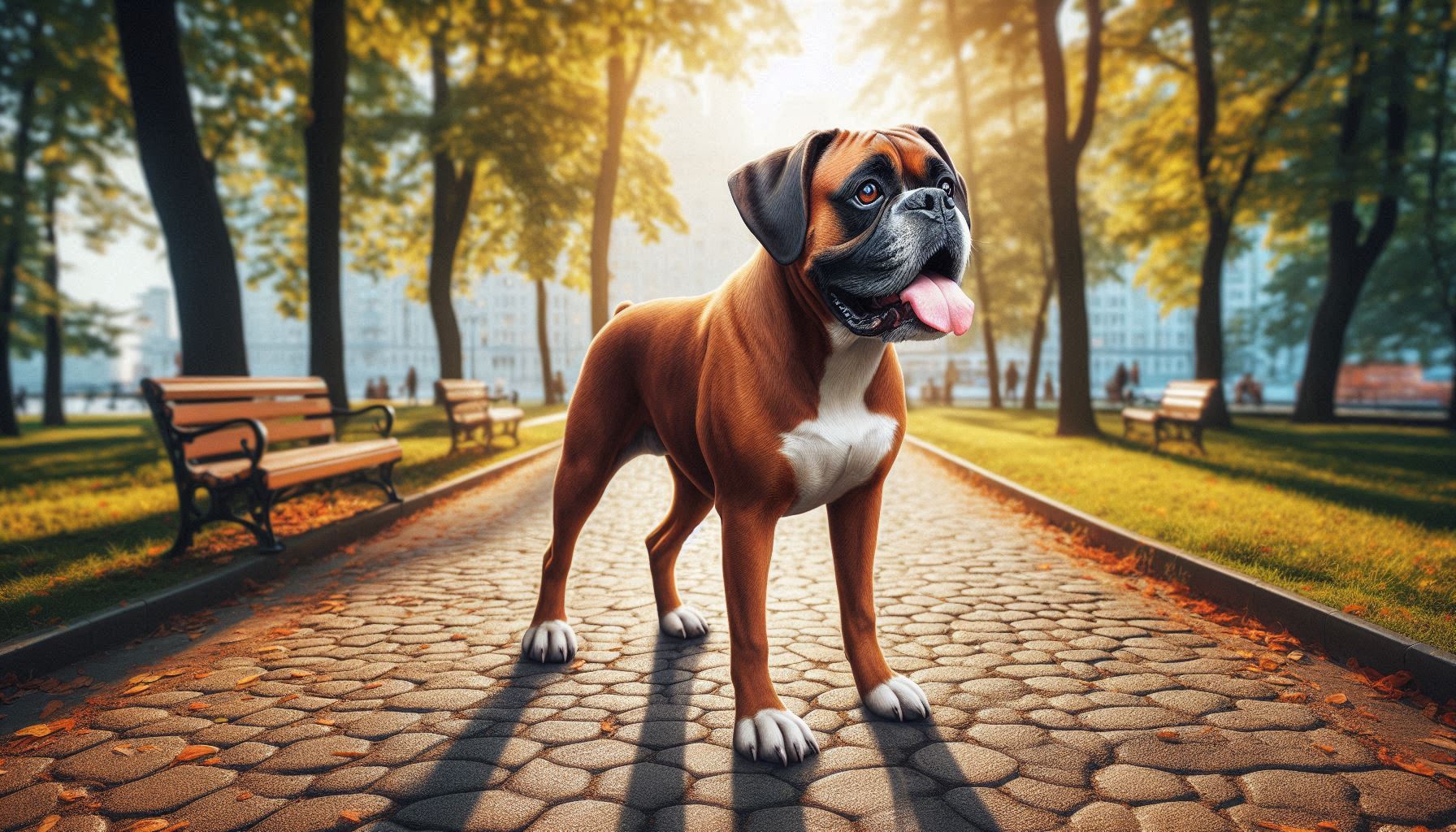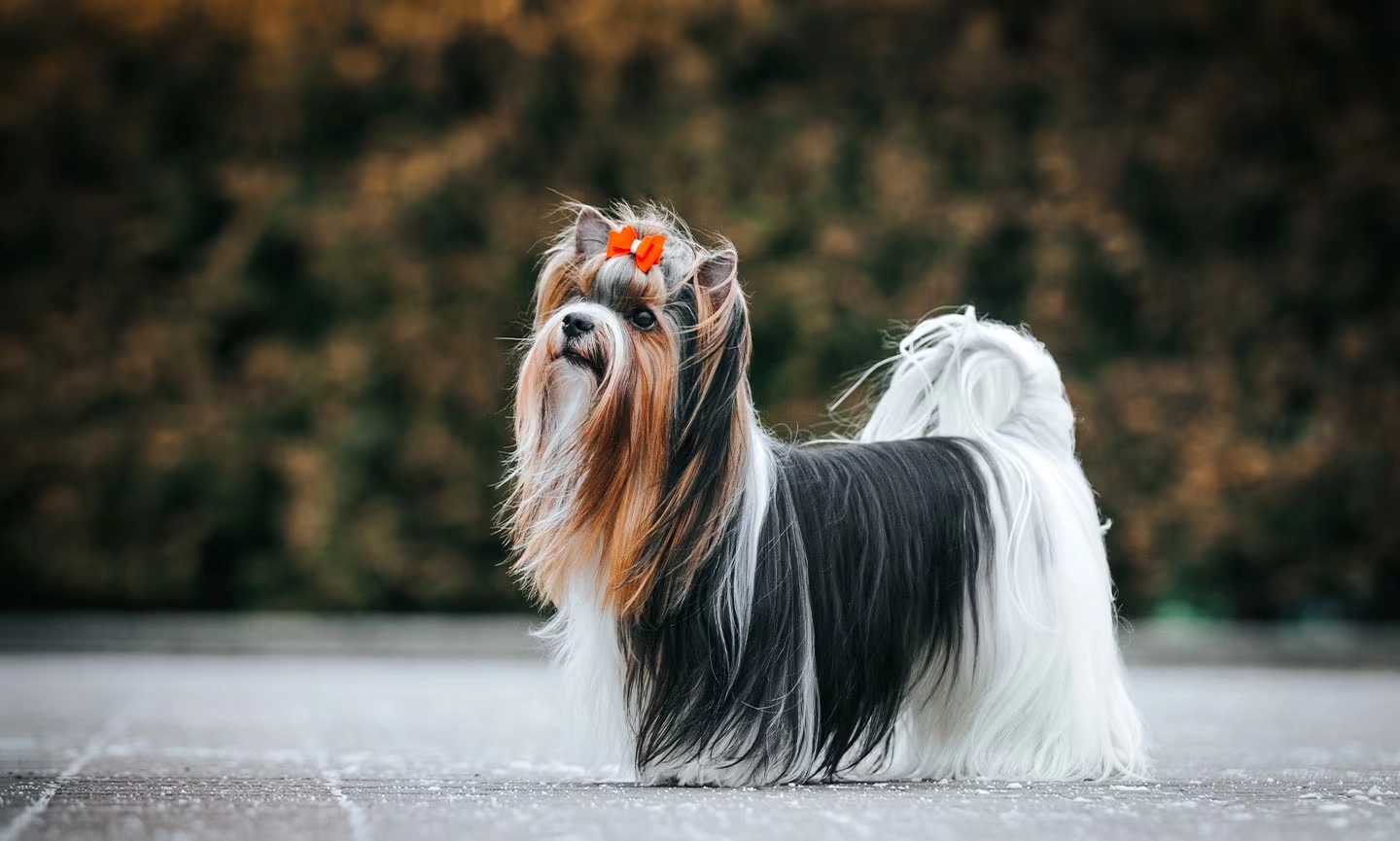Table of Contents
Giant Schnauzer Dog Breed
The Giant Schnauzer is a powerful and intelligent breed known for its imposing size, distinctive beard, and loyal temperament. Originating from Germany, this breed is the largest of the three Schnauzer varieties (Miniature, Standard, and Giant) and has earned a reputation for being both an excellent working dog and a devoted family companion. With its sharp mind, protective instincts, and striking appearance, the Giant Schnauzer is a popular choice among dog owners who seek a loyal and versatile pet.
Giant Schnauzer Dog History and Origin
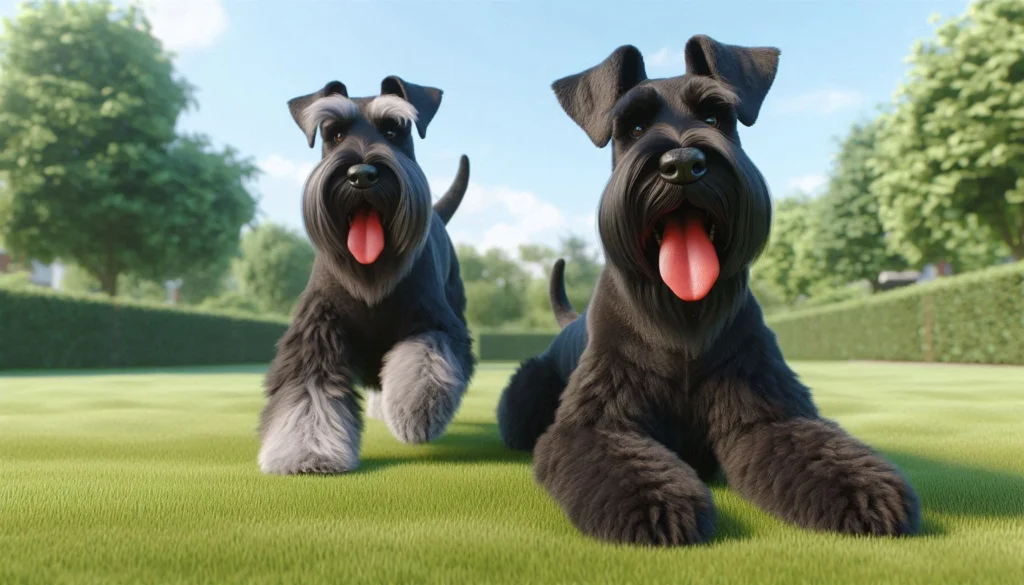
The Giant Schnauzer traces its origins to the Bavarian Alps in Germany, where it was initially bred in the 17th century. Farmers and cattlemen developed this breed by crossing the Standard Schnauzer with larger dogs such as the Great Dane, Bouvier des Flandres, and possibly the German Shepherd. The goal was to create a robust and fearless dog capable of driving cattle, guarding property, and even assisting in the brewery and butcher shops.
The breed’s name, “Schnauzer,” comes from the German word schnauze, meaning snout, a nod to the dog’s distinctive bearded muzzle. During World War I and World War II, the Giant Schnauzer was utilized by the German military and police forces due to its intelligence, trainability, and keen sense of smell.
An interesting historical fact about the Giant Schnauzer is that it was relatively unknown outside of Germany until the early 20th century. The breed was officially recognized by the American Kennel Club (AKC) in 1930, and since then, it has gained popularity in various roles, including search and rescue, police work, and as a reliable family guardian.
Giant Schnauzer Dog Physical Characteristics
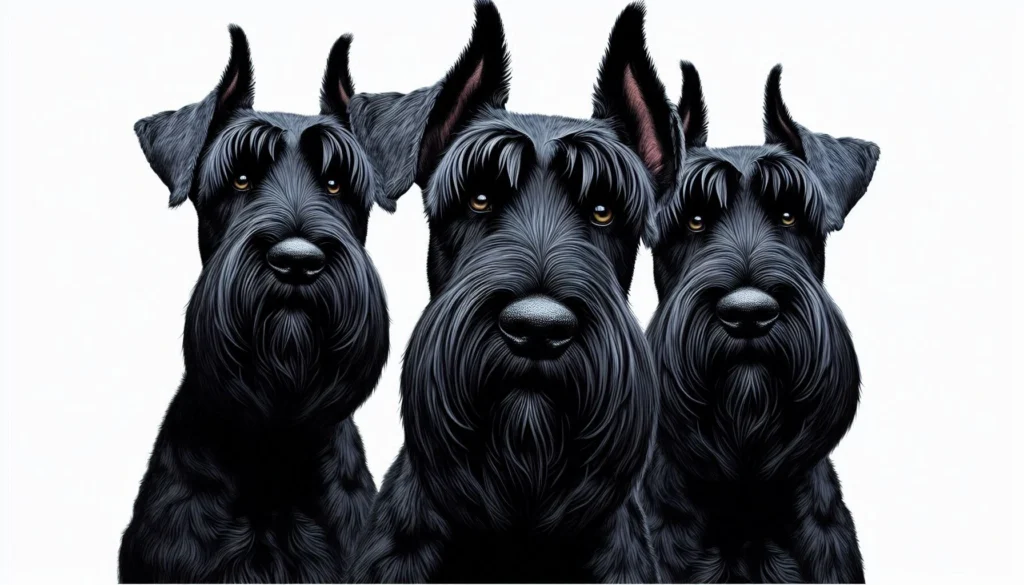
The Giant Schnauzer is a large, muscular dog with a distinctive and rugged appearance. It is built for power and endurance, making it well-suited to its original role as a working dog.
Size and Build
Giant Schnauzers are impressively large dogs, with males typically standing between 25.5 to 27.5 inches at the shoulder and females slightly smaller, ranging from 23.5 to 25.5 inches. Their weight generally falls between 55 to 85 pounds, though some can be larger.
Coat and Colors
One of the most recognizable features of the Giant Schnauzer is its dense, wiry coat. The coat is double-layered, with a soft undercoat and a harsh, wiry outer coat that provides protection from the elements. This coat requires regular grooming to maintain its texture and appearance.
The breed comes in two primary color variations: solid black and pepper and salt (a mix of black and white hairs that create a grayish appearance). Both colors are equally striking, with the black variety being more common.
Distinctive Features
The Giant Schnauzer’s most distinctive features are its strong, rectangular muzzle, bushy eyebrows, and prominent beard. These facial features give the breed a unique and expressive appearance. The ears are typically cropped in countries where the practice is still legal, giving the dog an alert and imposing look, though many owners prefer the natural, uncropped ears. The tail is usually docked, though this practice varies depending on regional laws and owner preference.
Temperament and Personality
Giant Schnauzers are known for their intelligence, loyalty, and protective nature. They are confident and bold, often exhibiting a strong sense of territoriality, which makes them excellent watchdogs.
Interaction with People
Giant Schnauzers are deeply devoted to their families and form strong bonds with their owners. They are affectionate and often seek to be close to their human companions, sometimes even displaying a bit of a “velcro dog” tendency. While they are generally good with children, their size and energy levels mean they should be supervised around younger kids to prevent accidental injuries.
Interaction with Other Animals
When it comes to other animals, Giant Schnauzers can be somewhat aloof or even dominant, especially with other dogs. Early socialization is crucial to ensure they learn to interact appropriately with other pets. With proper training and socialization, they can coexist peacefully with other animals, though they might always prefer the company of humans.
Health and Lifespan
Giant Schnauzers are generally healthy dogs, but like all breeds, they are prone to certain health issues. The average lifespan of a Giant Schnauzer is around 10 to 12 years.
Common Health Issues
Some of the most common health concerns in Giant Schnauzers include:
- Hip Dysplasia: A genetic condition that affects the hip joint, leading to arthritis and pain.
- Hypothyroidism: A condition where the thyroid gland does not produce enough hormones, leading to weight gain and other health problems.
- Progressive Retinal Atrophy (PRA): A degenerative eye disorder that can lead to blindness.
- Bloat (Gastric Dilatation-Volvulus): A serious and potentially life-threatening condition where the stomach twists, cutting off blood flow.
Tips for Maintaining Health
To keep a Giant Schnauzer healthy, regular veterinary check-ups are essential. Maintaining a balanced diet and ensuring they get adequate exercise will help prevent obesity and reduce the risk of joint issues. Regular grooming and dental care are also important aspects of their overall health maintenance.
Giant Schnauzer Care and Grooming
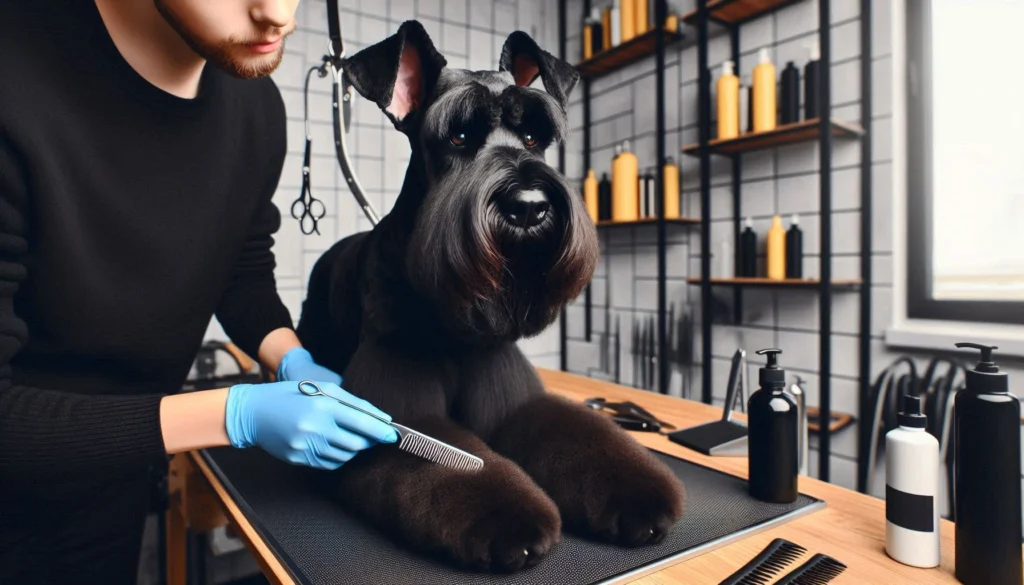
Giant Schnauzers require regular care and grooming to keep them looking and feeling their best. Their wiry coat, in particular, demands attention to prevent matting and to maintain its characteristic texture.
Grooming Needs
The Giant Schnauzer’s coat should be brushed several times a week to remove loose hair and prevent tangles. The coat also needs to be hand-stripped or clipped every few months to maintain its wiry texture. Bathing should be done as needed, usually every 6 to 8 weeks, depending on the dog’s activity level and lifestyle.
Regular ear cleaning is important to prevent infections, especially if the ears are uncropped, as these can trap dirt and moisture. Their nails should be trimmed regularly to prevent overgrowth, and dental care should not be neglected, with regular brushing and veterinary dental check-ups recommended.
Exercise Requirements
Giant Schnauzers are high energy dogs that require substantial exercise to stay happy and healthy. They thrive in active households where they can participate in daily physical activities such as long walks, runs, or play sessions. In addition to physical exercise, they need mental stimulation to prevent boredom, which can lead to destructive behavior.
Dietary Recommendations
Given their size and energy levels, Giant Schnauzers benefit from a high quality diet that is rich in protein and appropriate for their age, size, and activity level. Portion control is important to prevent obesity, and meals should be fed in multiple smaller portions rather than one large meal to reduce the risk of bloat.
Training and Socialization
Training and socialization are crucial for the Giant Schnauzer, given their intelligence, energy, and sometimes stubborn nature. Early training is essential to ensure they grow into well behaved and obedient adults.
Training Challenges and Tips
Giant Schnauzers are highly intelligent and eager to please, but they can also be independent and strong-willed. Consistency and patience are key when training this breed. Positive reinforcement techniques, such as praise, treats, and play, work best, as these dogs do not respond well to harsh training methods.
Basic obedience training should begin as soon as you bring your Giant Schnauzer puppy home. It’s important to establish yourself as the pack leader while providing clear and consistent commands. Advanced training, such as agility, obedience competitions, or even working roles like protection training, can be a great way to keep them engaged and mentally stimulated.
Importance of Socialization
Socialization is equally important for the Giant Schnauzer. Exposure to different environments, people, and other animals from a young age will help them develop into confident and well adjusted adults. Proper socialization can prevent behavioral issues such as aggression or shyness, making them more adaptable and friendly.
Suitability as a Family Pet
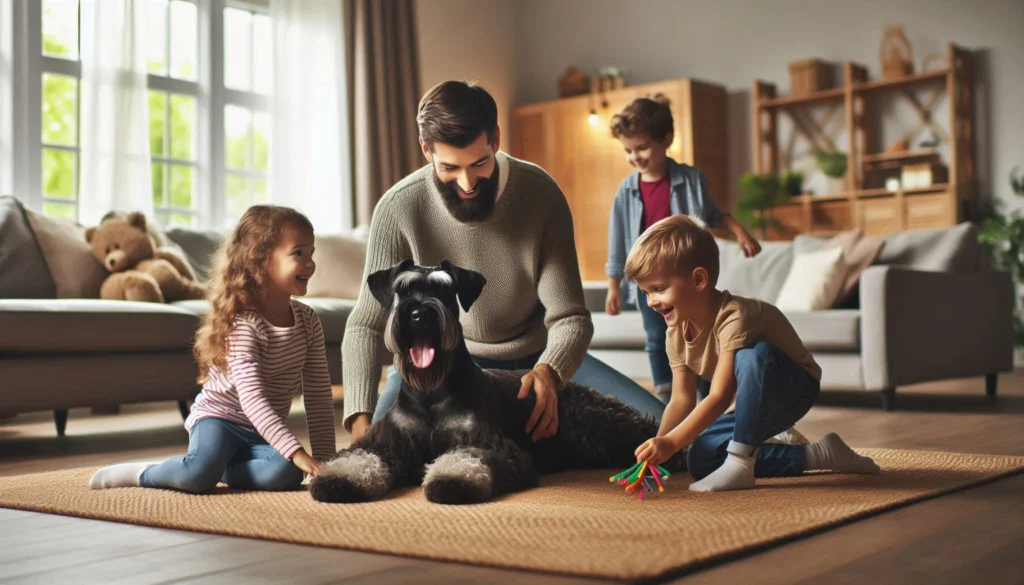
The Giant Schnauzer can make an excellent family pet for the right household. They are loyal, protective, and affectionate, making them great companions for active families.
Living Environment Considerations
Giant Schnauzers are best suited to homes with a yard where they can run and play. They are not ideal for apartment living due to their size and energy levels, but they can adapt if they receive sufficient exercise and mental stimulation. This breed thrives in a home where they are part of the family and included in daily activities.
Energy Levels
Giant Schnauzers are high energy dogs that need regular exercise to burn off excess energy. Without adequate physical activity, they can become bored and potentially destructive. They are not couch potatoes and will require active engagement from their owners.
Fun Facts and Trivia
- Versatile Workers: Giant Schnauzers have been employed in various roles, including police work, search and rescue, and even as military dogs.
- Movie Star: A Giant Schnauzer named “Diva” starred in the 2001 movie The Truth About Cats & Dogs.
- Long-Lived: The Giant Schnauzer tends to have a longer lifespan than many other large breeds, often reaching 12 years or more with proper care.
Dog Breeds Similar to Giant Schnauzer
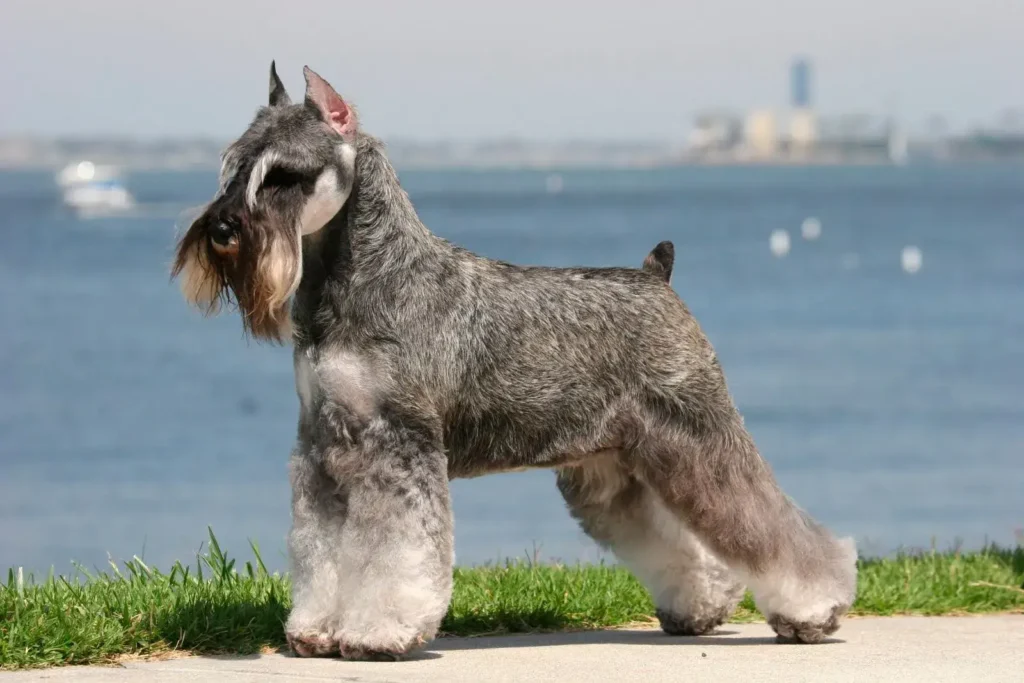
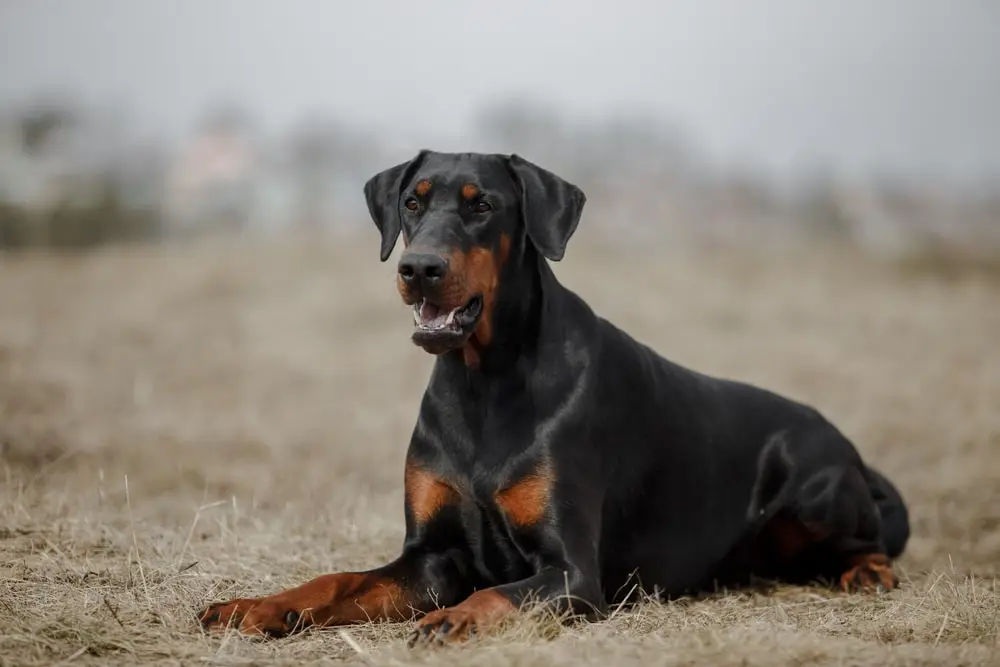

1. Standard Schnauzer
The Standard Schnauzer is the medium sized version of the Schnauzer family. They share many of the same traits as the Giant Schnauzer, including intelligence, loyalty, and a protective nature, but in a more compact size.
2. Bouvier des Flandres
The Bouvier des Flandres is a large, powerful herding dog with a similar coat and temperament to the Giant Schnauzer. Both breeds are known for their working abilities, intelligence, and protective instincts.
3. Doberman Pinscher
The Doberman Pinscher is another breed known for its protective nature and loyalty. Like the Giant Schnauzer, Dobermans are intelligent, energetic, and require consistent training and socialization.
Conclusion
The Giant Schnauzer is a breed that combines strength, intelligence, and loyalty in a way that few other breeds can match. Whether you’re looking for a devoted family pet, an active outdoor companion, or a capable working dog, the Giant Schnauzer may be the perfect choice. With proper care, training, and attention, this breed can bring years of joy and companionship to your life.
FAQs
Are Giant Schnauzers dangerous dogs?
Giant Schnauzers are not inherently dangerous dogs. They are known for their loyalty and protective nature, which can sometimes be mistaken for aggression. Proper training and socialization are essential to ensure they are well-behaved and confident, reducing the likelihood of any aggressive behavior.
Is the Giant Schnauzer a good guard dog to protect you or your family?
Yes, the Giant Schnauzer is an excellent guard dog. Their natural protective instincts, combined with their imposing size and alertness, make them well suited to guarding their home and family. However, they are also loyal and affectionate with their family members, making them great companions as well as protectors.

